Originating near the Kali temple in Calcutta in the 19th century was a simplified version of the Pattachitra scroll paintings made by the Patuas who migrated to the urban areas of Calcutta. The paintings are characterised by bold lines, and bright colours and do not have a lot of details in the background. They often portray scenes from Hindu mythology and scenes from everyday life. These paintings were created as souvenirs for those visiting the Kali temple, and later in the entire region of Calcutta.
Kalighat paintings are a fascinating art style because they depict a period in Indian history when society was undergoing a significant change. There were new developments in technology, the development of cheap oleographs, and lithographs, and the rush culture of urban areas led to the development of a unique style that had to cater to a newer audience. These paintings help in our understanding of that particular period of history, in which this unique art developed.
Portrayal of women in Pre and Post independence Kalighat paintings
Following India’s independence in 1947, the art form experienced a significant shift in the themes, particularly the depiction of women. It also became a platform for political commentary. This new focus reflected the changing political and cultural landscape, particularly the evolving role of women in Indian society.
Pre-independence Kalighat paintings depicted two categories of women: those in their traditional roles, such as mothers, wives and daughters; and those in more scandalous positions, such as that of women with extra-marital affairs or prostitutes. There was a particular thought process behind such depictions, as it was generally the educated women who were seen as harbingers of evil. There were shackles of colonial impressions in the pre-independence Kalighat paintings. The artists wanted to capture the changing societal norms and attitudes in general and towards women in particular.
However, the post-independence Kalighat paintings focused on the depiction of women as strong, independent and dynamic individuals. In contrast to the scandalous portrayal of women in pre-independence Kalighat, the post-independence paintings depict issues of gender discrimination and violence against women. This evolution in the depiction of women in the Kalighat paintings depicts the broader feminist movements and changes in the roles of women in Indian society. The post-independence Kalighat paintings also reflect the changing influences of Western culture and Victorian standards on society. This is evident in the attire and demeanour of the women depicted, as well as the choice of furniture and background. This shift represents a blend of different cultures, and increasing exposure to new ideas.

Women as Deities and Icons
Before independence, Kalighat paintings often portrayed women as powerful and revered goddesses such as Kali, Durga, and Lakshmi. These depictions reflect the prominent role of Hindu mythology in shaping societal values and placing women in positions of power and divinity.
Kalighat paintings were used by artists to express their surroundings, sometimes even satirically. They often painted the goddess Kali, who represented a powerful female figure. This same style of painting was then used to depict the ‘Babus’ (wealthy men), ‘Bibis’ (wealthy women), and ‘Baishyas’ (courtesans or prostitutes).

The Rise of the "Babu-Bibi Culture"
The rise of the affluent, educated class, known as the "Babu-Bibi culture" in the late eighteenth century brought new anxieties about changing gender roles. Kalighat art responded by introducing the Bibis often depicted adopting a more casual fashion and neglecting traditional domestic duties. These portrayals, often satirical, mirrored societal issues surrounding women embracing modernity and challenging traditional gender norms.
It showed artists were not just focused on deities anymore but were commenting on their changing society. The Babus were often portrayed in a negative light, with a beast-like nature, while the Bibi was powerful like Kali, they were also strong and unconventional, again echoing the traits of Kali.
Along with the depiction of Babu-Bibi, there was also a depiction of Baishyas or courtesans. These paintings depicted the courtesans, often with open hair, exposed heads and luscious breasts. The paintings such as “A barber tending to a sitting courtesan” displayed at the Victoria and Albert Museum, London are the perfect example to depict the amalgamation of Indian style with the modern art.

Women as Symbols of Resistance and Resilience
In 19th century Bengal, depiction of women in a patriarchal setting was one of the themes. Discussions about women’s education and women empowerment led to the shift from ‘Mahila’ to a ‘Bhadramahila’, an alteration of the traditional wife, signifying a woman of refined taste and education. However, paintings by Nibaran Chandra Ghosh are proof that women were still victims of domestic violence and were expected to be submissive individuals.

Domestic violence drawing by Nibaran Chandra, c. 1900 https://collections.vam.ac.uk/item/O71570/drawing-ghosh-nibaran-chandra/
Kalighat art also documented the growing involvement of women in political and social movements. Paintings depicted women protesting, demanding their rights, and challenging societal norms. This shift reflected the changing role of women in the post-colonial era, where they actively voiced their concerns and participated in shaping their future.


Conclusion
Kalighat paintings offer a fascinating glimpse into the complex and evolving relationship between societal expectations, gender roles, and females in India. By portraying women as both symbols of tradition and catalysts for change, the art form serves as a valuable record of this transformative period. The contemporary depiction of women in Kalighat can be seen as a continuing struggle for gender equality and women’s rights in today’s society. The depiction of women in the paintings correlates with their actual position in society.
There was a decline in Kalighat as a style of painting in the 1930s. However, with the struggle for independence and various movements such as the Swadeshi movement, there was an increase in the promotion and preservation of the folk arts as cultural ideals. The artists such as Jamini Roy started looking for indigenous inspirations as the language of art. The Kalighat paintings today focus on secular themes and current events such as Covid-19, as well as religious depictions in a modern style.

https://www.vam.ac.uk/articles/kalighat-painting#slideshow=4207388&slide=0

https://www.artamour.in/post/the-coronavirus-touches-the-brush-of-the-patua-painter-of-kalighat
- “The Rise and Fall of Kalighat Paintings.” Sahapedia. Accessed March 8, 2024. https://www.sahapedia.org/rise-and-fall-kalighat-paintings.
- Editor. “Kalighat Paintings: A Review.” The Chitrolekha Journal on Art and Design, March 13, 2014. https://chitrolekha.com/kalighat-paintings-review/.
- “Kalighat Painting · V&A.” Victoria and Albert Museum. Accessed March 8, 2024. https://www.vam.ac.uk/articles/kalighat-painting#slideshow=4207388&slide=0.
- “Kalighat Painting by Kalam Patua (India) - Google Arts & Culture.” Google. Accessed March 8, 2024. https://artsandculture.google.com/story/kalighat-painting-by-kalam-patua-india-queensland-art-gallery-gallery-of-modern-art/6gUhASBpOYt_IA?hl=en.
- Sanyal, Partha. “Kalighat Paintings: A review.” Chitralekha International Magazine on Art and Design 3, no. 1 (2013). https://doi.org/10.21659/chitro.
- “Kalighat Paintings: How a Rural Performance Art Shaped India’s Cultural Landscape.” Sahapedia. Accessed March 8, 2024.
- Sengupta, Ramyani. “Understanding ‘Babu Culture’ through Kalighat Paintings.” The Itihasology Journal 1, no. 1 (2022).


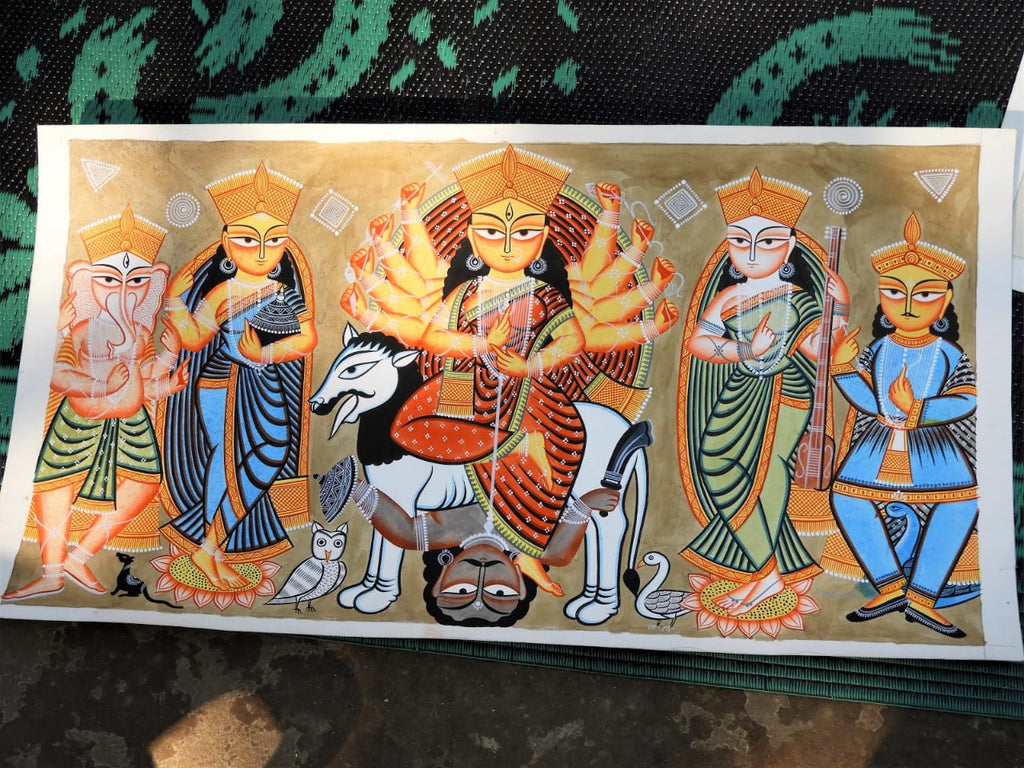










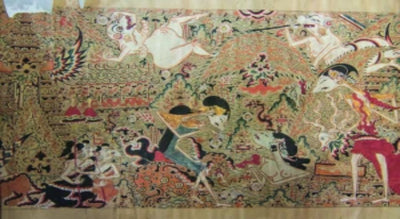
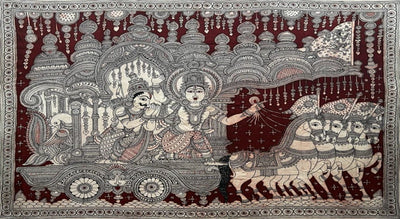

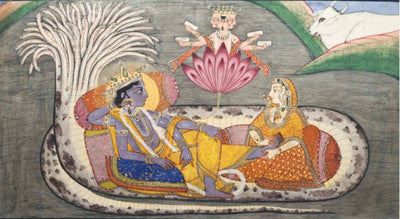
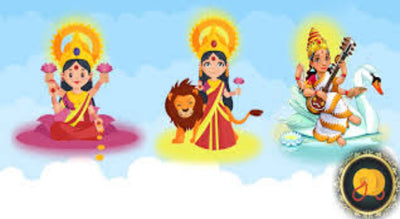
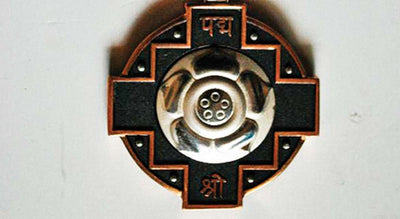
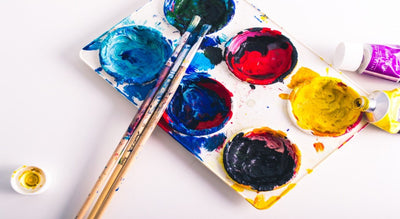
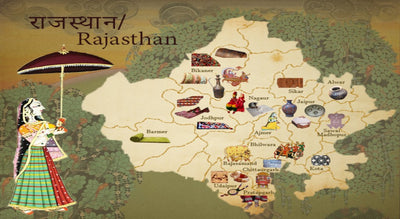
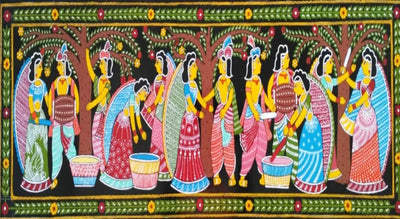
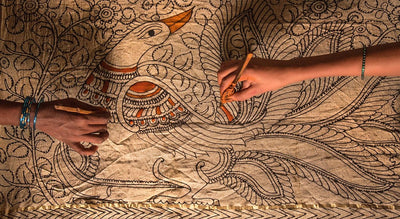
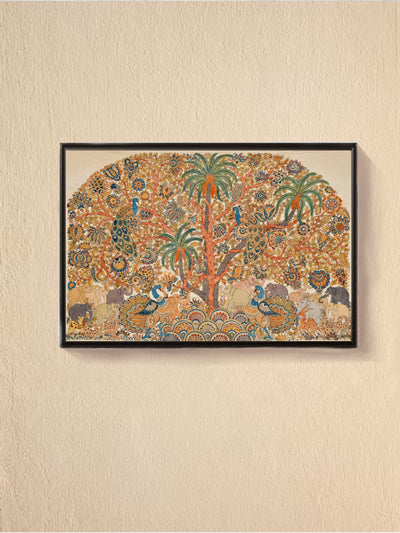







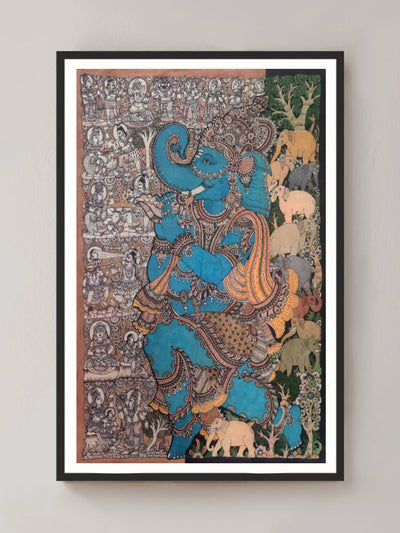








Beautiful depictions of humans in Kalighat art. I am also learning different art forms by watching online art courses by Penkraft. If anyone is interested, they have hundreds of art tutorials to learn at https://online.penkraft.in/ArtAttackHome. It is on a subscription basis so you can take it as per your convenience.